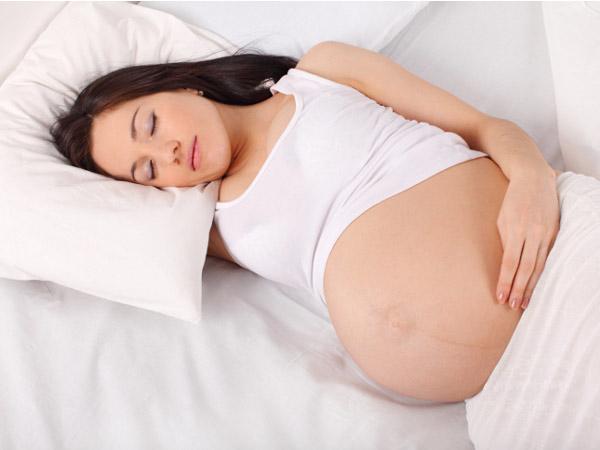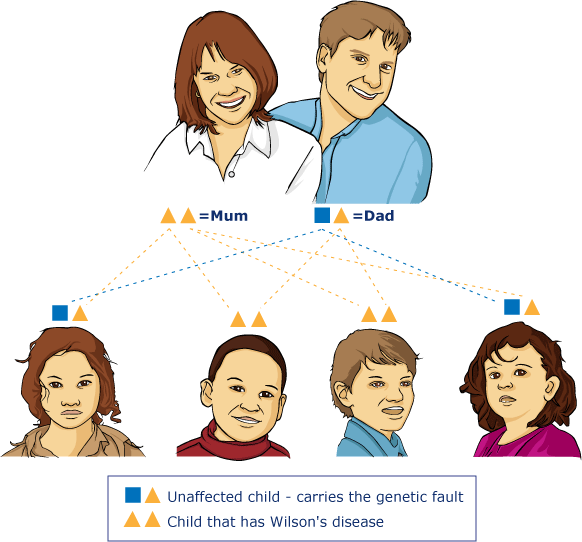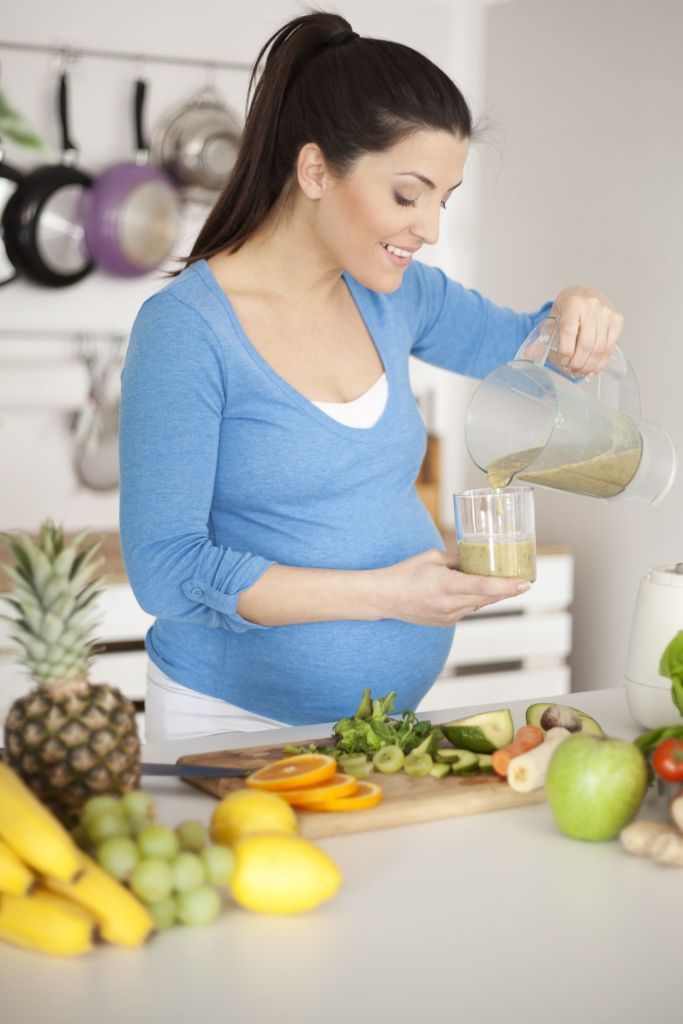Braxton hicks while sleeping
Why Do Contractions Get Worse At Night?
Have you had a sneaking suspicion that your contractions get worse* at night? Maybe it feels like your pregnant body just wants to find another way to wake you up in the middle of the night. Maybe you haven’t felt them but wake up on feeling like you just ran a marathon.
If you fall into the category of “most women”, you are probably correct – your body is working overtime, you are having more contractions at night.
Contraction frequency peaks between 8:30-2am.
The middle of the night is when contractions tend to kick in the most. Research shows that contraction frequency tends to peak, on average, between the hours of 8:30-2am. Luckily, you should get a break when the sun comes out – the uterine muscles tends to be take it easy during morning hours [1].
But why would you have more contractions while you sleep? The most likely culprit – your hormones!
Hormones = More Contractions at Night
At night, the hormones that increase the contracting nature of your uterine muscle – estrogens and prostandins – predominate [1]. And oxytocin and melatonin hit their peak at night too[2].
You may be familiar with oxytocin – the main hormone that stimulates your uterine muscle to contract. Melatonin is, in many ways, the buddy hormone for oxytocin[3]. And melatonin is a fascinating one to consider as the gangleader for night-time contraction-inducing hormones since the brain only releases melatonin in the dark (read: while you are sleeping).
How melatonin levels relate to your contractions at night comes down to it’s interaction with oxytocin. As oxytocin’s buddy hormone, melatonin helps oxytocin work more efficiently to increase contraction frequency[4]. Towards the end of your pregnancy, your body starts to produce more melatonin and more melatonin receptors in the uterine muscle[5]. This means that not only is your body bathed in more melatonin during those last few weeks of pregnancy but your body’s ability to respond to melatonin also increases as the big day approaches.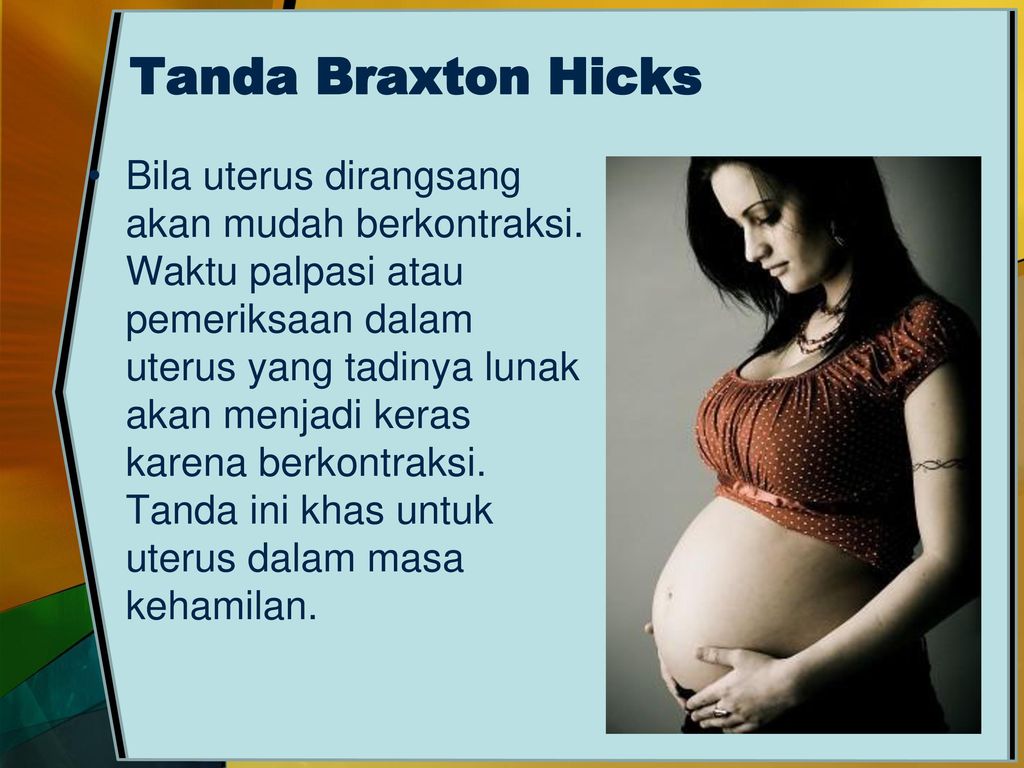
More oxytocin + more melatonin = more contractions.
Overnight contractions = your body getting ready?
Most likely, these contractions are non-labor contractions (also called Braxton Hicks contractions) that are helping your body “warm-up” for the big day.
But they may also signal when things are getting ready to go. One study has suggested that night-time contractions kick up a notch in the days leading up to delivery. Researchers on that study found a “nocturnal surge” in contraction frequency between 4-7am that might be predictive of labor. Women who delivered babies at term (37+ week), showed the surge pattern starting as early as 80 days before baby’s birth[6].
*Keep in mind that contractions can also increase if you are stressed or dehydrated. If you are experiencing more contractions than normal, try upping your water intake during the day and go easy on yourself.
REFERENCES:
[1] Zahn, V.![]() , and W. Hattensperger. 1993 “Circadian Rhythm of Pregnancy Contractions”. Z Geburtshilfe Perinatol. 197(1):1-10.
, and W. Hattensperger. 1993 “Circadian Rhythm of Pregnancy Contractions”. Z Geburtshilfe Perinatol. 197(1):1-10.
[2] Serón-Ferré M, et al. 1993. “Circadian Rhythms during Pregnancy.” Endocr Rev. 14(5):594-609.
[3] Sharkey, James T., Roopashri Puttaramu, R. Ann Word, and James Olcese. 2009. “Melatonin Synergizes with Oxytocin to Enhance Contractility of Human Myometrial Smooth Muscle Cells.” The Journal of Clinical Endocrinology and Metabolism 94 (2). The Endocrine Society: 421.
[4] Reiter, Russel J., Dun Xian Tan, Ahmet Korkmaz, and Sergio A. Rosales-Corral. 2014. “Melatonin and Stable Circadian Rhythms Optimize Maternal, Placental and Fetal Physiology.” Human Reproduction Update 20 (2): 293–307.
[5] Voiculescu, S. E., N. Zygouropoulos, C. D. Zahiu, and A. M. Zagrean. 2014. “Role of Melatonin in Embryo Fetal Development.” Journal of Medicine and Life 7 (4): 488–92.
[6] Alfredo M., et al. 1993. “Relationship of Circadian Rhythms of Uterine Activity with Term and Preterm Delivery. ” American Journal of Obstetrics and Gynecology 168 (4): 1271–77.
” American Journal of Obstetrics and Gynecology 168 (4): 1271–77.
YOUR PREGNANCY SMARTS. Delivered.
Sign up for the Preg U Newsletter!
Braxton Hicks Every Night
Pregnant women experience different issues before they can finally deliver their baby. One of the common feelings is getting severe contractions, especially at night. A majority of women experience Braxton hicks every night and seem like their body is being overworked. This can keep you up all night, and in some cases, you may wake up tired. The human body is unique, and once you get closer to childbirth, the body seems to start getting prepared for D-day. This is the main reason why there are hormones that work hard at night, resulting in frequent contractions every night.
What are Braxton Hicks?You may be among many women that experience Braxton hicks every night and are not even aware of it. Braxton hicks are one way the body starts to adjust and get ready for labor and delivery. These are commonly known as false labor and frequently happen, especially at night. The body is just preparing for the actual labor and childbirth.
These are commonly known as false labor and frequently happen, especially at night. The body is just preparing for the actual labor and childbirth.
The frequency of the contractions will vary depending on several factors like hydration and level of activities. If you have been experiencing false labor or Braxton hicks, there is nothing to worry about. This is a common thing that allows you to get a sneak peek of what to expect on the delivery day.
What Makes False Labor Become Frequent?In the 2nd and 3rd trimesters, it is possible to experience Braxton hicks every night. While these are contractions, they are painless, and the cervix will not dilate. Generally, during this period, the uterus muscles will keep flexing in preparation for the delivery. The frequency tends to increase as you draw closer to the due date. For most women, this becomes a common experience at night. Some of the reasons why Braxton hicks may become frequent include:
- Being dehydrated
- Having been on your feet for a long time
- Over-hydration
- Stress and anxiety
Generally, even when you are experiencing Braxton hicks every night, you have nothing to worry about.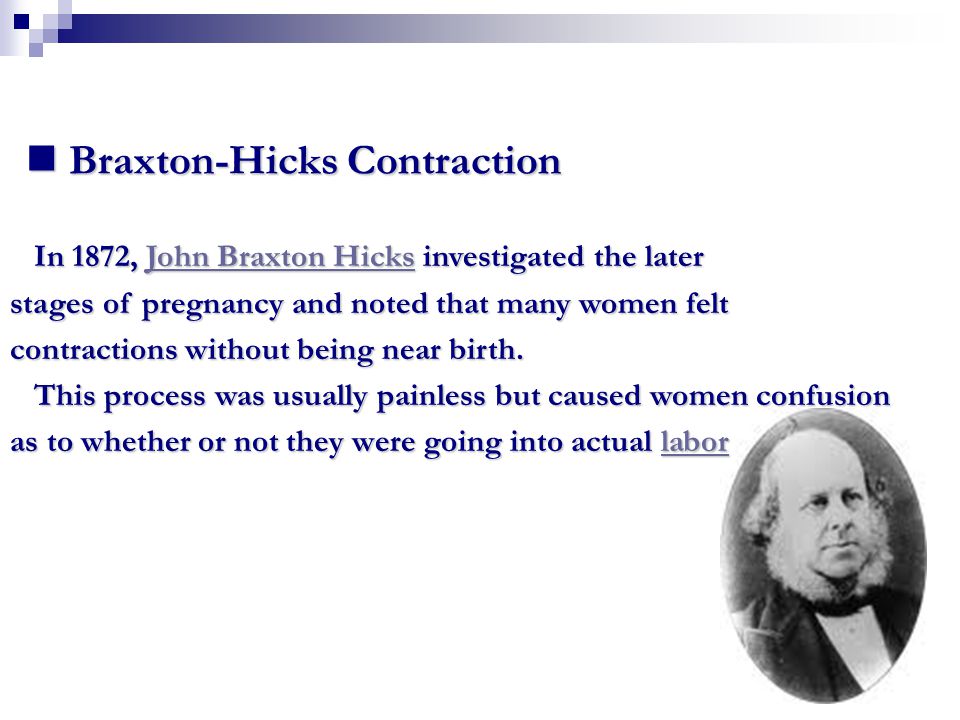 However, you need to check with your doctor in the event of any unusual activity with your body or the baby.
However, you need to check with your doctor in the event of any unusual activity with your body or the baby.
Whereas experiencing Braxton hicks every night may be a common thing; if it worries you, talk to your doctor. It is advisable to monitor the pain levels and frequency of the contractions. Such information helps the doctor to give the proper diagnosis.
Here are some concerns that should necessitate a visit to the doctor:
- More than eight contractions per hour
- Amniotic fluid leaking
- Reduced movement in the tummy
- Painful contractions which are 10 minutes apart
- Vaginal bleeding
Once your doctor examines you, they will make the relevant recommendations to prevent any harm to the baby or yourself.
Is Getting Braxton Hicks Every Night Common?Getting Braxton hicks every night is typical in most pregnancies. Being stressed or dehydrated are some of the reasons why the frequency of false labor may increase.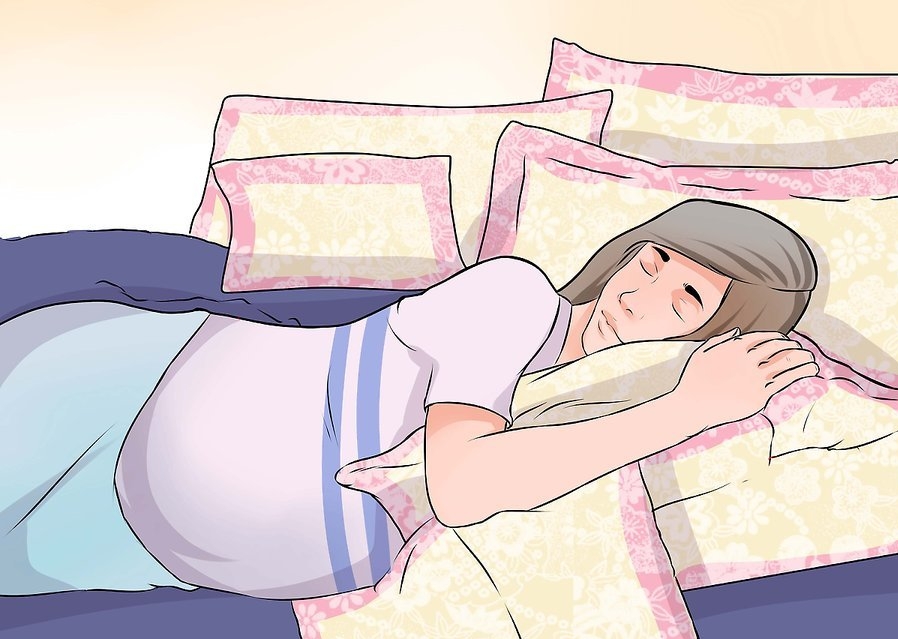 In case the contractions or labor feels real, consult a doctor right away.
In case the contractions or labor feels real, consult a doctor right away.
Use left/right arrows to navigate the slideshow or swipe left/right if using a mobile device
90,000 Braxton Hicks contractions. How to distinguish between false and real contractions?Braxton-Hicks contractions or false labor contractions are irregular contractions and relaxation of the muscles of the uterus as a way of preparing for true labor. They are thought to start around 6 weeks of gestation but are not usually felt until the 2nd or 3rd trimester.
False contractions are a normal part of pregnancy. They may be uncomfortable, but not painful. Women describe them as a feeling that feels like mild menstrual cramps or tightness in a specific area of the abdomen that quickly resolves.
They are also irregular in duration and intensity, occur infrequently, are unpredictable and not rhythmic, and are more uncomfortable than painful.
Braxton Hicks contractions tend to increase in frequency and intensity towards the end of pregnancy. Women often mistake Braxton Hicks contractions for real labor. However, unlike real contractions, they do not dilate the cervix and result in the birth of a baby.
Braxton Hicks contractions occur when the muscle fibers of the uterus contract and relax. The exact etiology of Braxton Hicks contractions is unknown. However, there are circumstances that can cause them:
- when the woman is very active,
- when the bladder is full,
- after sexual activity,
- when the woman is dehydrated.
Common among all these circumstances is the potential stress on the fetus and the need for increased blood flow to the placenta to provide oxygen to the fetus.
- Change position or activity level: if you were very active, lie down; if you have been sitting for a long time, go for a walk.
- Relax: take a warm bath, massage, read a book, listen to music or take a nap.

If you have Braxton Hicks contractions or if they continue and become more frequent and intense, you should see your doctor.
When assessing for Braxton Hicks contractions, there are a few key questions to ask yourself. We have prepared a table for you with questions, the answers to which will help you understand what kind of contractions you have:
| Braxton Higgs contractions | Real labor pains | |
|---|---|---|
| How often do contractions occur? | Irregular and do not increase over time. | Occurs at regular intervals and gets stronger over time. |
| How long do contractions last? | Unpredictable. They can last less than 30 seconds or up to 2 minutes. | Lasts 30 to 90 seconds and gets longer over time. |
| How strong are the contractions? | Usually weak and either stay the same or get weaker and then disappear. | Increase over time. |
| Where do contractions feel? | Often only felt in the front of the abdomen or in one specific area. | Begin in the middle of the back and wrap around the belly towards the midline. |
| Do abbreviations change with movement? | May stop if activity level changes or if woman's position changes. | Continue and may even get worse with movement or change of position. |
Back to the list of articles
false or real / “Waiting for the baby”
How to distinguish them from real contractions, and why they are needed, we will try to find out.
The phenomenon of temporary contractions was first described by the English doctor John Braxton Hicks. That is why they are called - Braxton Hicks contractions or false, training contractions, precursor contractions. In his scientific work of 1872, he argued that these contractions are short-term (from half a minute to 2 minutes) contractions of the muscles of the uterus, which are felt by a pregnant woman as an increase in the tone of the uterus. They appear after the 20th week of pregnancy. And during the day they happen often, but the expectant mother in the daytime may not even notice them. However, as time goes on, they intensify, becoming more and more obvious.
They appear after the 20th week of pregnancy. And during the day they happen often, but the expectant mother in the daytime may not even notice them. However, as time goes on, they intensify, becoming more and more obvious.
WHAT DO YOU NEED FALSE BROUGHT
The uterus is a muscular organ. And like any muscle that has to perform the work allotted to it in the body, it needs training. After all, if she hangs for all forty weeks like a bag, she will not cope with the load in childbirth. Thus, the purpose of training or false contractions is to prepare the uterus and cervix for childbirth. That is why one of the names of training bouts is contractions harbingers - harbingers of an approaching birth.
ARE FALSE PARTS PAINFUL?
As a rule, false contractions are painless, but with increasing duration they become more noticeable and bring more discomfort. However, in all women, they manifest themselves in different ways, someone does not feel them at all, and someone does not sleep at night, tossing and turning and trying to find a comfortable position for sleeping. It all depends on the pain threshold. The main thing in this situation is to stop being nervous about this and calm yourself with the thought that such training is necessary for the most important upcoming event - the birth of your crumbs. And to calm down a little and sleep better, ask your doctor to prescribe a sedative for you and get a special pillow for expectant and nursing mothers. With her, falling asleep and experiencing the discomfort of the last weeks of pregnancy will be much easier!
It all depends on the pain threshold. The main thing in this situation is to stop being nervous about this and calm yourself with the thought that such training is necessary for the most important upcoming event - the birth of your crumbs. And to calm down a little and sleep better, ask your doctor to prescribe a sedative for you and get a special pillow for expectant and nursing mothers. With her, falling asleep and experiencing the discomfort of the last weeks of pregnancy will be much easier!
HOW TO LIVE WITH FREQUENT PARTS
Some expectant mothers complain that their Braxton Hicks contractions are frequent and cause significant discomfort, even when they are doing housework or other light physical activity. In such a situation, obstetricians are advised to lie down or vice versa, take an easy walk, in any case, change the type of activity. If training contractions bother you a lot, it is recommended to drink a glass of water, juice or herbal tea, calm down and get some rest. Ask someone close to give you a massage. Lie in silence. And to also benefit from training fights, try doing breathing exercises: practice breathing techniques in childbirth in practice.
Ask someone close to give you a massage. Lie in silence. And to also benefit from training fights, try doing breathing exercises: practice breathing techniques in childbirth in practice.
HOW TO DIFFERENTIATE TRAINING FROM LIVING
The most important thing to understand is that real contractions are much more painful than Braxton Hicks contractions. You will understand it right away. In addition, the contractions that bring you closer to childbirth are more regular. The contractions begin in the lower back, spread to the front of the abdomen, and occur every 10 minutes (or more than 5 contractions per hour). Then they occur with an interval of about 30-70 seconds and over time the intervals between them are reduced. Some women describe the sensations of labor pains as severe menstrual cramps, or sensations during diarrhea, when the pain rolls in waves in the abdomen. These contractions, unlike false ones, continue even after a change in position and when walking, constantly intensifying.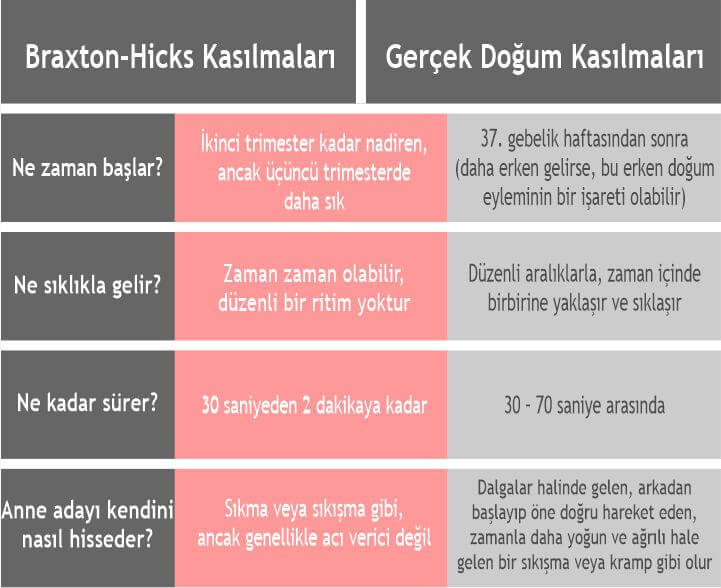 As soon as you feel all these symptoms, call your ob-gyn - hour X has arrived. If in doubt, also do not be afraid to disturb the doctor. The doctor will ask you a few questions that will help him determine the type of contractions and eliminate all your doubts and worries. After all, it is always better to consult a doctor and trust his professional experience.
As soon as you feel all these symptoms, call your ob-gyn - hour X has arrived. If in doubt, also do not be afraid to disturb the doctor. The doctor will ask you a few questions that will help him determine the type of contractions and eliminate all your doubts and worries. After all, it is always better to consult a doctor and trust his professional experience.
You should seek help if:
• you have more than four contractions an hour and they happen regularly
• contractions are accompanied by pain in the lower spine
• contractions are accompanied by watery or bloody vaginal discharge
• the contractions are so strong that it is very difficult for you to endure them
• there is a marked change in the child's movement, or less than 10 movements every 2 hours
• you think your waters have started to break
Alla Misyutina, Consultant Physician, Independent Laboratory INVITRO
Dear women, during labor, the body needs a lot of oxygen, so proper breathing is very important. A large influx of oxygen into the blood of mother and baby alleviates the condition of the crumbs, which during childbirth experiences oxygen starvation. Special breathing techniques help to properly open the birth canal and make contractions and attempts as effective as possible.
A large influx of oxygen into the blood of mother and baby alleviates the condition of the crumbs, which during childbirth experiences oxygen starvation. Special breathing techniques help to properly open the birth canal and make contractions and attempts as effective as possible.
Different types of breathing should be used at different stages of labor.
• During "false" contractions, breathing should be deep and slow. During the period when the contractions become more intense, it is necessary to use "pain-relieving breathing". This breathing is slow, deep, the inhalation is done through the nose, it should be longer than the exhalation through the mouth. More details: inhale is done at the expense of 1-2-3-4, and exhale - at the expense of 1-2-3-4-5-6. With the help of such breathing: mom relaxes, distracts from pain, focuses on the score; the baby receives as much as possible, so he needs oxygen.
• In breaks from contractions, you need to rest and breathe evenly without any effort, so that you can then easily follow the doctor's recommendations.
• During attempts, you need to exhale all the air from the lungs, then take a deep breath and push for up to 6-9 seconds. Quickly exhale all the air, quickly take a deep breath and again hold your breath for 6-9 seconds, and so on - about three times per attempt.
• In breaks from attempts to rest and breathe deeply, evenly and relaxed.
• It is very important to only push on the perineum and never push on the head. In this case, all efforts are wasted and will appear in the form of burst vessels in the eyes and on the face.
• In the period after the birth of the head, it is necessary to stop pushing and breathing shallowly, some call this breathing “dog-like”, deep breathing can harm both mom and baby. Then everything goes on as usual, the main thing is to obey the doctor.
• After the baby was born, within half an hour the last stage of labor begins - the birth of the placenta. Special breathing is no longer required, at the doctor's command, push a little into the perineum and EVERYTHING! Dear women, pain during childbirth is good, it means that your baby will be born soon. There is no need to resist the pain, this is a mistake that brings a woman and a child nothing but fatigue. On the contrary, it is necessary to concentrate and help in every possible way to give birth to a healthy baby.
There is no need to resist the pain, this is a mistake that brings a woman and a child nothing but fatigue. On the contrary, it is necessary to concentrate and help in every possible way to give birth to a healthy baby.
BIRTH AGAIN
So, you have decided that this is no longer a “teaching”, but the beginning of childbirth. In addition to contractions, the onset of labor can be indicated by the outflow of amniotic fluid and the passage of a mucous plug that closes the lumen of the cervix. The mucous plug can also come off 2-3 days before delivery. However, her departure does not always mean that it is time to go to the hospital. During pregnancy, the cervix is tightly closed. With the onset of labor pains, its opening begins: the cervix of the uterus gradually expands to 10-12 cm in diameter (full disclosure). The birth canal is preparing to "release" the child from the womb. Intrauterine pressure increases during contractions as the uterus shrinks. And in the end, this leads to rupture of the fetal bladder and the outflow of part of the amniotic fluid.
The first, preparatory, period of labor for women giving birth for the first time takes an average of 12 hours, and 2-4 hours less for those who have second births. At the beginning of the second stage of labor, contractions join the contractions - contractions of the muscles of the abdominal wall and diaphragm. In addition to the fact that different muscle groups are involved in contractions and attempts, they have one more important difference: contractions are an involuntary and uncontrollable phenomenon, neither their strength nor frequency depend on the woman in labor, while attempts to a certain extent obey her will , it can delay or strengthen them. Therefore, at this stage of childbirth, a lot depends on the expectant mother and her ability to quickly and correctly follow the commands of the obstetrician taking delivery. And most importantly - to tune in correctly and not allow panic and thoughts about something bad. Obstetricians and gynecologists recommend that mothers perceive childbirth as a holiday, a baby's birthday.